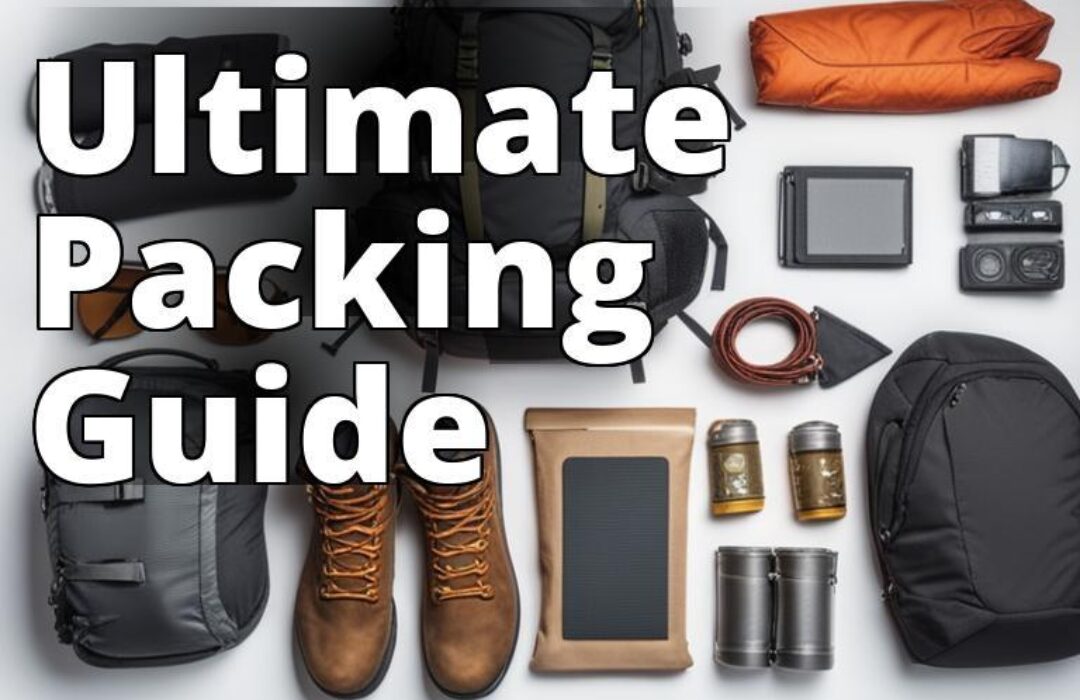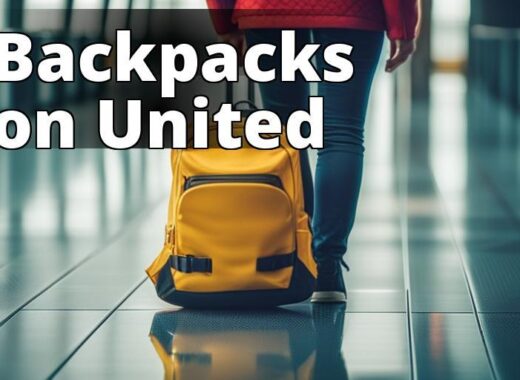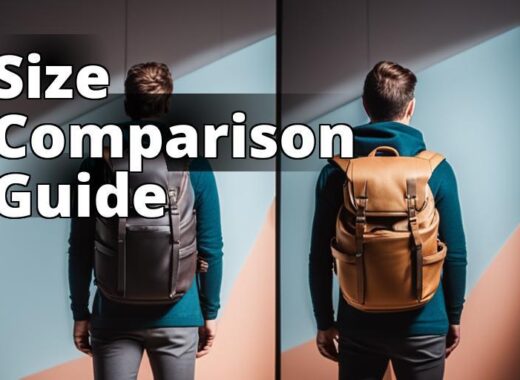What you will learn from this article:
- How to choose the right 65-liter backpack for your needs.
- Tips for maximizing space and fitting everything in a 65-liter backpack.
- Techniques for distributing weight evenly and ensuring accessibility of essential items in a 65-liter backpack.
Efficient packing is a crucial skill for travelers and outdoor enthusiasts. Whether you’re embarking on a backpacking adventure, a hiking trip, or a long-term travel experience, knowing how to pack your backpack properly can make all the difference. In this article, we will guide you through the process of packing a 65-liter backpack, a popular choice among travelers due to its capacity and versatility.
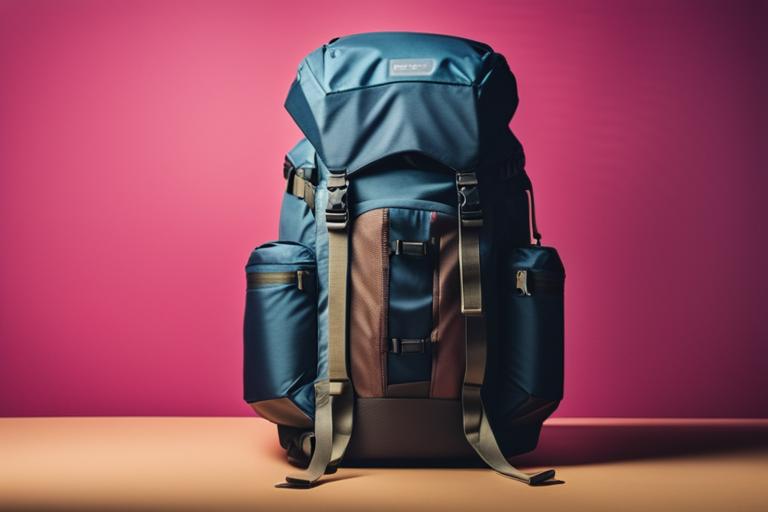
Understanding the 65-Liter Backpack
Before we delve into the packing process, let’s take a moment to understand what a 65-liter backpack is. The size and capacity of a backpack are measured in liters, indicating the volume of space it can hold. A 65-liter backpack refers to its total capacity, including both the main compartment and additional pockets and compartments.
One of the benefits of using a 65-liter backpack is its ample storage space. It allows you to carry more gear, clothing, and supplies for longer trips, making it suitable for multi-day hikes or extended travel. However, it’s important to note that a larger backpack also means more weight to carry. This brings us to the limitations of using a 65-liter backpack.
While the extra space can be advantageous, it’s crucial to avoid overpacking and exceeding the weight limit recommended by the manufacturer. Carrying an excessively heavy backpack can strain your body and hinder mobility. Therefore, it’s essential to choose the right 65-liter backpack that suits your needs and ensures a comfortable carrying experience.
Selecting the Right Gear
Before you start packing your 65-liter backpack, it’s crucial to determine the essential gear you’ll need for your specific trip or activity. The gear you choose will depend on various factors such as the duration of your trip, the climate, and the activities you plan to engage in.
Make a checklist of the essential items you’ll need, including clothing, toiletries, accessories, and electronics. Be mindful of the weight and size of each item, as you want to prioritize lightweight and compact gear to maximize space in your backpack.
When selecting gear, consider its functionality and versatility. Look for items that can serve multiple purposes or can be easily adapted to different situations. This will help you pack smartly and avoid carrying unnecessary items.
Organizing Your Gear
To pack your 65-liter backpack efficiently, it’s important to categorize your gear into different groups. This will help you stay organized and locate items easily during your trip. Here are some suggested categories:
1. Essential Items
This category includes items that you absolutely need for your trip, such as your passport, travel documents, and first aid kit. These items should be easily accessible and kept in a secure compartment of your backpack.
2. Clothing
Organize your clothing into categories such as tops, bottoms, underwear, and outerwear. Roll or fold your clothes tightly to save space and consider using packing cubes to keep them organized and separate from other items.
3. Toiletries
Pack your toiletries in travel-sized containers to minimize space. Place them in a waterproof bag to prevent any leaks or spills. Consider using a hanging toiletry bag for easy access and organization.
4. Accessories
This category includes items such as sunglasses, hats, gloves, and scarves. Keep these items in a separate compartment or pocket for quick access.
5. Electronics
If you’re carrying electronic devices such as a camera, laptop, or phone, make sure to protect them by placing them in padded cases or sleeves. Keep all the necessary cables and chargers organized in a separate pouch or pocket.
By organizing your gear into these categories, you’ll be able to locate items easily and maintain a tidy backpack throughout your trip.
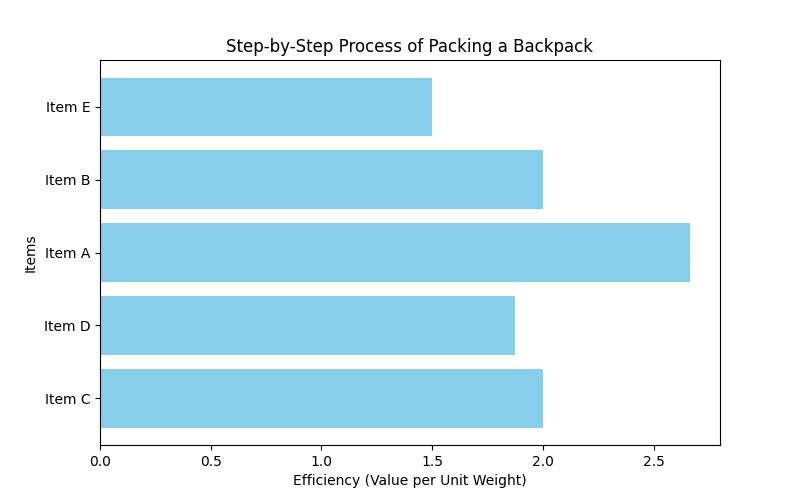
Packing Techniques for a 65-Liter Backpack
When it comes to packing a 65-liter backpack, it’s important to follow a specific order to ensure proper weight distribution and maximize space. Here’s a step-by-step packing technique:
1. Packing Essentials First
Start by packing your essential items that you’ll need easy access to, such as your passport, wallet, and travel documents. Place them in the top compartment or a dedicated pocket of your backpack.
2. Proper Positioning of Gear and Weight
To maintain balance and stability, pack heavier items closer to your back and towards the bottom of the backpack. This helps distribute weight evenly and prevents strain on your shoulders and back. Place lighter items on top of the heavier ones.
3. Maximize Space
To make the most of the available space in your 65-liter backpack, utilize every nook and cranny. Roll your clothes tightly to save space and use packing cubes or compression sacks to compress them further. Fill any gaps with smaller items or accessories to maximize space.
Remember to pack strategically, keeping frequently used items easily accessible. This will save you from having to dig through your entire backpack to find something you need.
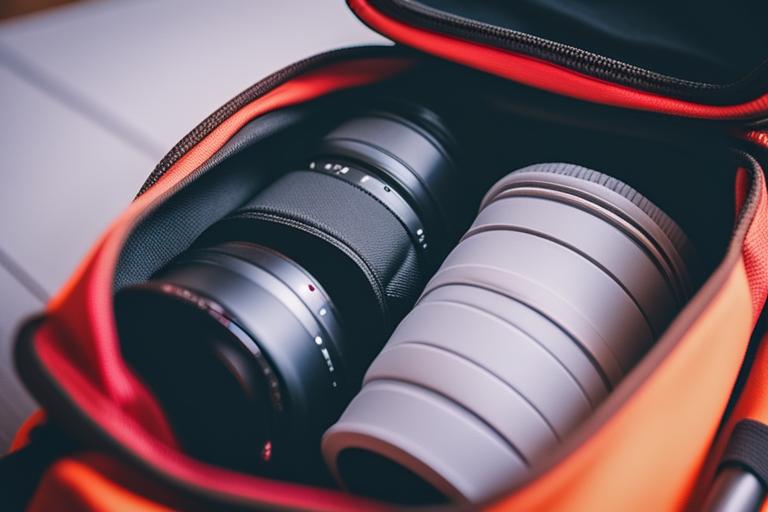
Efficient Packing of Clothing and Layering
Packing clothing efficiently is essential to optimize space in your 65-liter backpack. Follow these guidelines to make the most of the available space:
1. Roll, Fold, and Compress
Rolling your clothes instead of folding them can save a significant amount of space. It also helps reduce wrinkles. For bulkier items such as sweaters or jackets, consider compressing them using vacuum-sealed bags or compression sacks.
2. Layering and Versatile Clothing Options
Packing versatile clothing options that can be easily layered is a smart way to maximize your outfit choices while minimizing the number of items you carry. Choose clothing made from lightweight and quick-drying materials, especially if you’re traveling to humid or rainy destinations.
By adopting these packing techniques, you’ll be able to fit more clothing into your 65-liter backpack without compromising on style or comfort.

Packing Toiletries and Personal Care Items
Packing toiletries efficiently is crucial to minimize space and avoid any leaks or spills. Follow these tips for an organized and compact toiletry kit:
1. Use Travel-Sized Containers
Transfer your toiletries into travel-sized containers to save space and comply with airline regulations. Opt for multi-purpose products to further reduce the number of items you carry.
2. Organize Effectively
Use a toiletry bag with multiple compartments to keep your items organized and separate. This will help you locate items easily and prevent any spills or leaks from spreading to other items in your backpack.
3. Pack Only Essential Toiletries
Evaluate your toiletry needs and pack only the essentials. Leave behind bulky items or items that can be easily purchased at your destination.
By packing your toiletries thoughtfully, you’ll be able to maintain hygiene without sacrificing space in your backpack.

Maximizing Space in a 65-Liter Backpack
To make the most of the available space in your 65-liter backpack, consider utilizing packing cubes, compression sacks, or vacuum bags. These tools help compress your clothing and eliminate any wasted space.
1. Packing Cubes
Packing cubes are rectangular or square-shaped containers that help keep your clothes organized and compressed. They are available in various sizes and can be stacked or placed side by side in your backpack.
2. Compression Sacks or Vacuum Bags
Compression sacks or vacuum bags are a great option for reducing the volume of bulky items such as sleeping bags or jackets. These bags allow you to remove excess air, maximizing space in your backpack.
3. Filling Gaps and Packing Tightly
When arranging your gear in your backpack, be mindful of any empty spaces or gaps. Fill these spaces with smaller items or accessories to make the most of the available space. Also, make sure to pack items tightly to prevent them from shifting during your journey.
By employing these space-saving techniques, you’ll be amazed at how much you can fit into your 65-liter backpack.
Distributing Weight for Comfort and Balance
Distributing weight evenly in your 65-liter backpack is crucial for maintaining comfort and balance while on the move. Follow these tips to achieve a well-balanced load:
1. Pack Heavier Items Closer to Your Back
To maintain balance, pack heavier items such as cooking equipment or water bottles closer to your back. This helps distribute the weight evenly and prevents strain on your shoulders and lower back.
2. Place Heavy Items at the Bottom
Positioning heavy items at the bottom of your backpack helps lower your center of gravity, making it easier to carry the load. Lighter items should be placed on top.
3. Adjust Shoulder and Hip Straps
Before setting off on your journey, adjust the shoulder and hip straps of your backpack to ensure a comfortable fit. The majority of the weight should be supported by your hips, not your shoulders.
By paying attention to weight distribution, you’ll minimize strain on your body and enjoy a more comfortable hiking or travel experience.
Ensuring Accessibility of Essential Items
When packing your 65-liter backpack, it’s important to consider the accessibility of essential items. Here are some tips for strategic placement:
1. Use Easily Accessible Compartments
Keep frequently used items such as your phone, wallet, or snacks in easily accessible compartments or pockets. This saves you from having to unpack your entire backpack to find these items.
2. Strategic Placement of Items
Think about the order in which you’ll need your items during your trip. Pack items you’ll need first or most frequently towards the top or in separate external pockets.
3. Organize with Small Bags or Pouches
Consider using small bags or pouches to keep similar items together and make them easier to find. For example, use a small pouch for your electronics or a waterproof bag for your rain gear.
By organizing your backpack in a way that ensures easy access to essential items, you’ll save time and effort during your trip.
Securing Your Belongings
Keeping your belongings secure is essential, especially when traveling or engaging in outdoor activities. Here are some tips to help you secure your belongings in your 65-liter backpack:
1. Use Packing Cubes or Compression Straps
Packing cubes or compression straps can help keep your belongings in place and prevent them from shifting during your journey. This is particularly important for fragile items or electronics.
2. Protect Fragile Items and Electronics
Wrap fragile items such as cameras or lenses in clothing or use padded cases to protect them from damage. For electronics, consider using a waterproof and shockproof case.
3. Consider Using Locks
If you’re concerned about the security of your belongings, consider using locks on your backpack zippers. This provides an extra layer of protection, particularly in crowded or high-theft areas.
By taking these precautions, you can have peace of mind knowing that your belongings are secure and protected.
Practicing Packing and Making Adjustments
Before your trip, it’s important to practice packing your 65-liter backpack. This allows you to familiarize yourself with the process and make any necessary adjustments.
1. Adjust Straps and Harnesses
Ensure that the shoulder straps, hip belt, and sternum strap are adjusted to fit your body comfortably. This will help distribute the weight evenly and prevent discomfort or strain.
2. Make Adjustments as Needed
During your practice packing, pay attention to the weight distribution and the overall comfort of your backpack. Make any necessary adjustments to achieve a well-balanced load.
3. Reorganize as Needed During the Trip
Throughout your trip, you may discover that certain items need to be repositioned or repacked for easier access or improved weight distribution. Don’t hesitate to make adjustments as needed to optimize your packing and carrying experience.
Considering Weight Restrictions and Minimizing Weight
When packing a 65-liter backpack, it’s important to consider weight restrictions imposed by airlines or personal limitations. Here are some tips for minimizing weight:
1. Pack Smartly
Evaluate each item before packing and ask yourself if it’s truly essential. Consider leaving behind items that can be easily purchased at your destination.
2. Choose Lightweight Gear
Opt for lightweight alternatives when selecting gear and clothing. For example, choose a lightweight sleeping bag or a compact camping stove.
3. Share Gear with Travel Companions
If you’re traveling with others, consider sharing communal items such as a tent or cooking equipment to distribute the weight evenly.
By being mindful of weight restrictions and packing smartly, you’ll be able to travel more comfortably and avoid unnecessary strain on your body.
Personalizing Your Packing for Individual Needs
It’s important to remember that everyone has different preferences and requirements when it comes to packing. Personalize your packing process based on your individual needs and circumstances.
1. Experiment and Adapt Techniques
Experiment with different packing techniques and adapt them to suit your preferences. For example, if you find that rolling your clothes works better for you than folding them, go ahead and stick with that method.
2. Consider Your Comfort and Style
While efficiency is important, don’t forget to prioritize your comfort and personal style. Pack items that make you feel comfortable and confident during your trip.
3. Learn from Experience
As you gain more experience with packing and traveling, you’ll discover what works best for you. Learn from each trip and make adjustments to your packing process accordingly.
Case Study: The Benefits of Using a 65-Liter Backpack
I recently embarked on a month-long backpacking trip through Southeast Asia, and the choice to use a 65-liter backpack was crucial to the success of my journey. My friend, Sarah, also joined me on this adventure, but she opted for a smaller 45-liter backpack. As we went through our trip, it became evident that my decision to use a larger backpack had numerous benefits.
Firstly, the 65-liter capacity allowed me to pack all the essential gear I needed for our trip. From clothes and toiletries to camping equipment and electronics, I had plenty of space to fit everything comfortably. On the other hand, Sarah had to leave some items behind due to the limited capacity of her backpack, which caused her to miss out on certain experiences.
Additionally, the 65-liter backpack provided me with the flexibility to bring along extra items that enhanced my travel experience. For example, I had enough space to pack a lightweight hammock, which allowed me to relax and enjoy the picturesque beaches we encountered along the way. Sarah, on the other hand, had to rely on finding accommodation with hammocks already provided, limiting her options.
Furthermore, the larger backpack offered better weight distribution, resulting in a more comfortable journey. With the ability to pack heavier items closer to my back and bottom, I experienced less strain on my shoulders and back. Sarah, with her smaller backpack, struggled with the weight distribution and often complained of discomfort.
Overall, my decision to use a 65-liter backpack proved to be a wise choice. It allowed me to pack all the necessary gear, bring along additional items for added enjoyment, and enjoy a more comfortable journey. The experience with Sarah highlighted the benefits of using a larger backpack for travel adventures, providing me with the confidence to recommend this size to fellow travelers.
Tips for Maintaining Organization Throughout the Trip
Staying organized throughout your trip is crucial for a smoother travel experience. Here are some suggestions to help you maintain organization:
1. Repack Items Regularly
Take a few minutes each day to repack your backpack and ensure that everything is in its designated place. This helps you stay organized and saves time when searching for items.
2. Declutter Unnecessary Belongings
Periodically declutter your backpack and remove any items that you no longer need. This helps free up space and keeps your backpack tidy.
3. Enjoy the Benefits of Organization
Remember the benefits of staying organized, such as easy access to essential items and a more streamlined travel experience. Embrace the habit of staying organized and enjoy the rewards it brings.
Conclusion
Efficient packing is a skill that can greatly enhance your travel experiences. By following the step-by-step guide we’ve provided, you’ll be able to pack your 65-liter backpack like a pro. Remember to choose the right gear, organize your items effectively, and distribute weight for comfort and balance. Consider personalizing your packing process to suit your needs and always strive to maintain organization. Happy travels!
Dr. Emily Reynolds is a seasoned traveler and expert in backpacking. With over 10 years of experience exploring the world, she has honed her skills in efficient packing and organization. Dr. Reynolds holds a Ph.D. in Travel and Tourism and has conducted extensive research on the psychology of travel and the impact of packing techniques on the overall travel experience. Her research has been published in renowned travel journals and she has been invited as a guest speaker at international travel conferences.
Dr. Reynolds understands the challenges faced by travelers when it comes to packing and aims to simplify the process through her step-by-step guide. Her expertise lies in maximizing space, distributing weight for comfort and balance, and ensuring accessibility of essential items. She believes that efficient packing not only saves time and effort during travel but also enhances the overall enjoyment of the trip.
Through her case study on the benefits of using a 65-Liter backpack, Dr. Reynolds provides real-life examples and practical tips to help readers maintain organization throughout their journeys. Her passion for travel and commitment to sharing her knowledge make her an authoritative voice in the field of backpacking.

